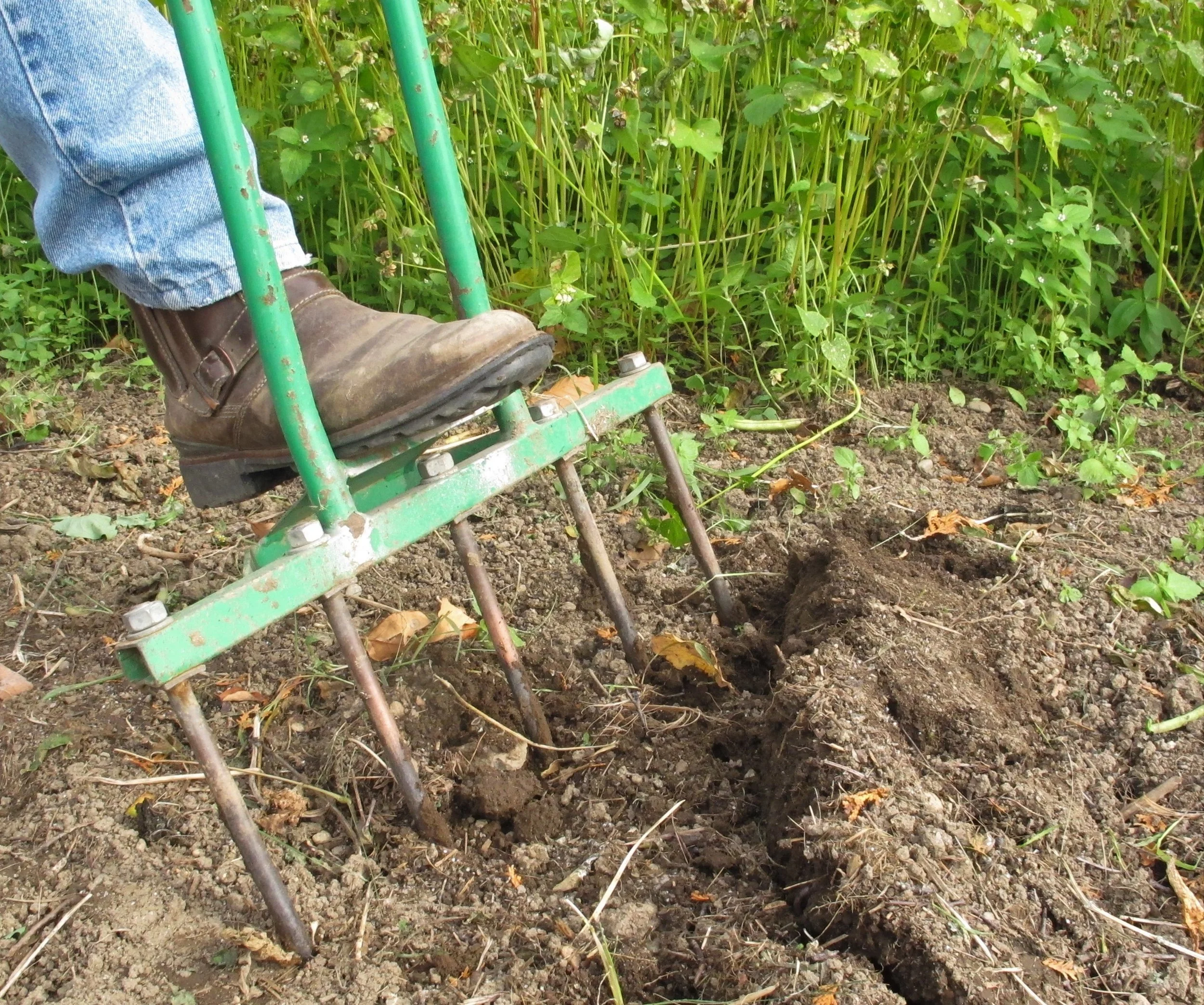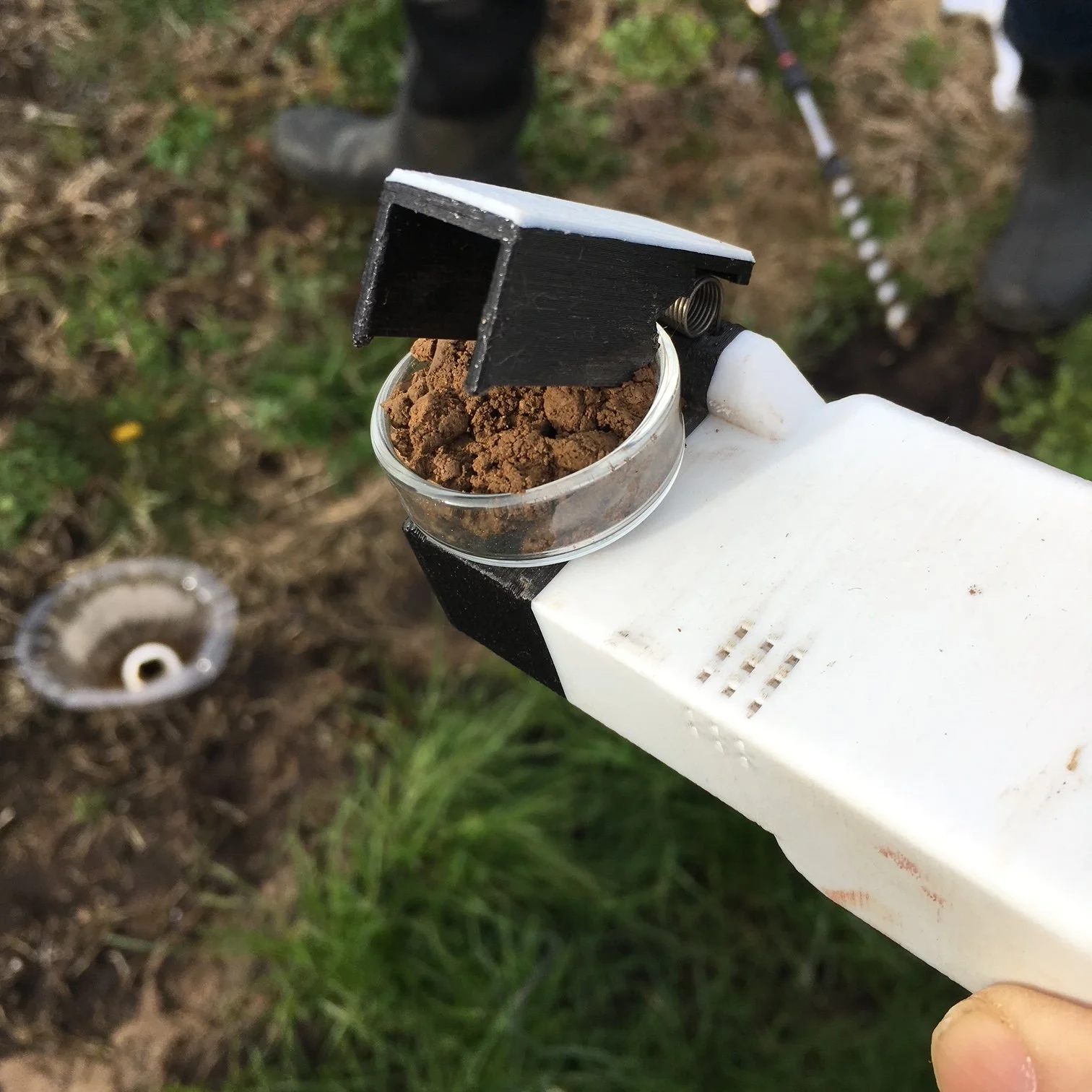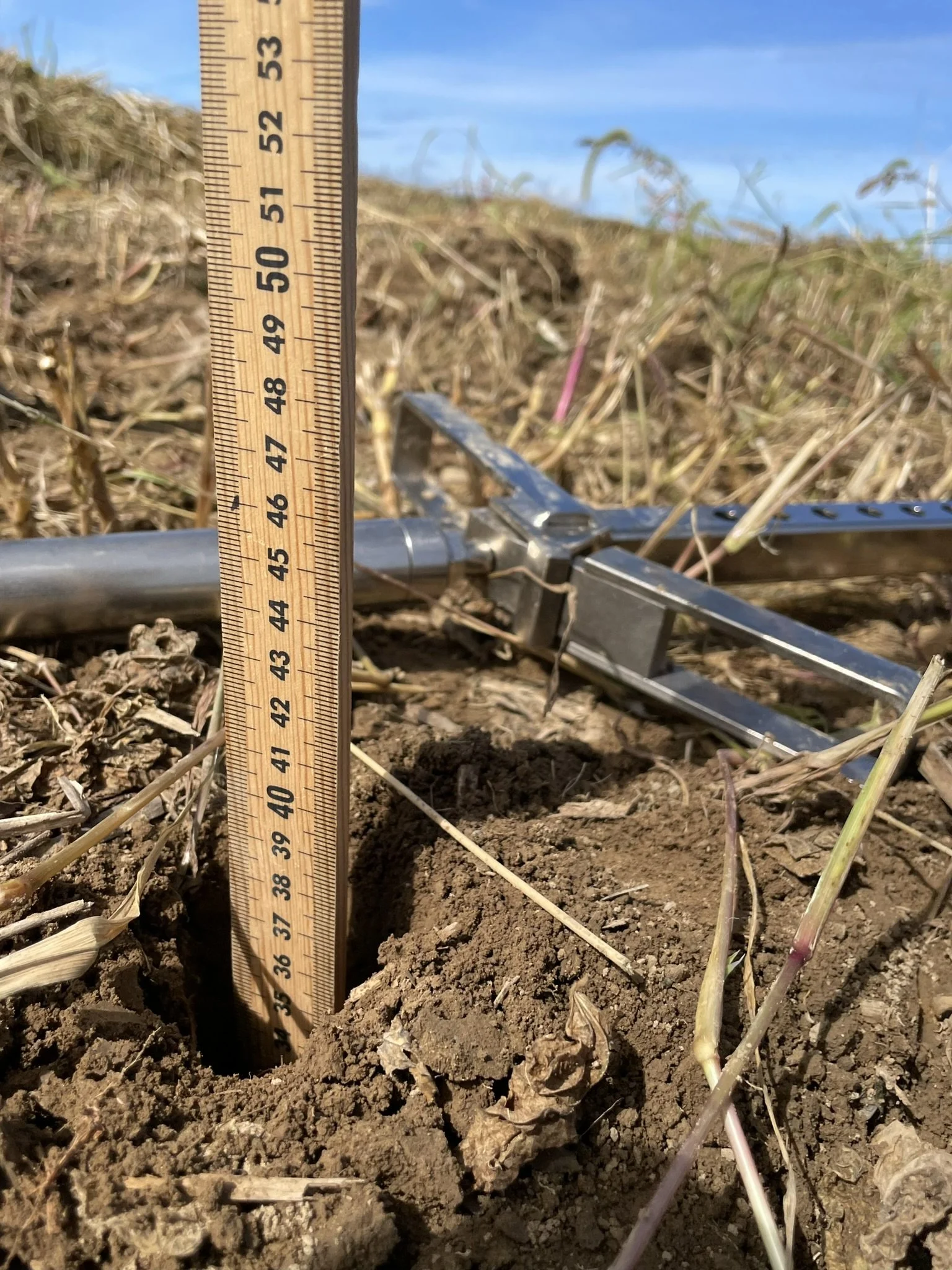
In a study, we attempt to observe the interplay of
soil, crops, and the environment that shape broader outcomes.
Ecological border on barley and wheat fields, Rügen Island, Germany. Photo by WB 2024.
Context behind our research projects
-

Compost Response to Intense Handling
Starting in the 1980s, composting was increasingly mechanized promising faster results and higher quality. Commissioned by USDA and NYSERDA to investigate quality issues we found large large fossil-fuel usage implications to pile turning and evidence of stratification of test elements at depth. Pile-turn intensification led to greater nitrogen losses. In the end, the research concludes turning improves sampling homogeneity but more turning didn’t result in better compost.
-

Compost Hygiene Quality
Compost has long been the foundation of organic farming, with its roots reaching back to the early 20th century. But large-scale, modern composting—especially community-based programs—only gained momentum in the 1990s. It was widely promoted as a safe, eco-friendly way to divert leaves, grass, and food scraps from landfills. With minor regulations in place, public and private programs expanded rapidly. On the West Coast alone, composting saved millions of cubic yards of landfill space each year—along with significant costs and environmental impacts.
Our study focused on the microbiological safety of compost, excluding sludge-based and manure composts. Instead, we looked at “bio-compost,” made purely from green waste, a category emphasized in European standards. Using current EPA methods and microbiological best practices, we evaluated compost from 94 facilities across the U.S. The results were eye-opening: only one-third of the samples met high hygiene standards, while another third showed serious microbial violations. Despite compost’s reputation as a clean, sustainable solution, our findings reveal the need for stronger oversight—and a clearer definition of what quality compost should be.
-
Soil Tillage and Organic Growers
Critics claim that tillage in organic farming destroys soil structure, spurs critters to consume organic matter, and releases stored CO2. We have to ask, what kind of tillage, and how much?
To test this, a team set up replicated field plots and made weekly soil measurements during an entire growing season with four types of “tillage” including No-Till.
Rototilling every week which could be taken to be the extreme “organic” approach mostly for weed control (instead of repeated herbicide spraying) did not affect soil carbon at all, as expected. The team also observed other interesting trends. For example, tillage (rototiller) had no effect of soil aggregate stability, contrary to what promoters of NT say. And broadfork tillage - this had the best effect overall. The greatest loss of carbon - was from the herbicide treated plots.
-

Concerning the True Origins of Soil Health Science.
Swiss research in the 1970s showed that organic leafy greens avoided the high nitrate levels common in conventional ones—an early breakthrough linking food quality to soil health. And it wasn’t the first. Our article dives into pioneering organic farming studies that shaped the field long before its broader recognition.
-

How much (free, natural) nitrogen can your soil provide?
Farmers are told to overlook the natural nitrogen 'gift' from healthy soil and rely instead on soil yield equations. We carefully measured soil biology and nitrogen release and compared to yield and N-uptake with and without N-fertilizer. Soil contributed nearly 70 lbs/a N due to soil microbial respiration. $ different soil labs that received the soils couldn’t estimate natural N-release and therefore over-recommended nutrients. Is the cost saving worth worrying about?
-

Whole System Composting in the Vineyard
Our vineyard soil & compost efforts encompassed a decade in California with the late Alan York, the renowned biodynamic viticulturist, following earlier work in Europe. We designed and implemented full vineyard recycling of grape marc press cake (dark pile) and cattle manure (foreground) mixed with vine prunings for a high-quality 9-month compost process to enhance terroir. Impacts on grape vigor - too much is bad - became primary determinants of use rate in the soil.
-
Disruptive Technologies: Good or maybe bad?
Disruptive technologies are often praised for transforming industries with simpler, more efficient solutions. However, they can quickly shift from innovation to overhyped ventures when marketing overtakes substance - case of "solutions in search of problems." One case is "QuickCarbon," a handheld IR spectrometer introduced as a potential game-changer for measuring soil carbon in the field, allegedly eliminating the need for soil labs. The device failed to deliver reliable results. It didn’t stop here. Its purpose was then pivoted to assessing "bio-nutrient availability" through vegetable surface coloration analysis—another claim that has yet to prove satisfactory.
This trend reflects a deeper issue: using end-users as beta testers instead of conducting rigorous, science-backed trials. Often, individuals behind such technologies—frequently without an established company—offload risk onto customers. While this may seem cost-effective, it undermines credibility, erodes trust, and sidesteps accountability to investors and scientific standards. It’s a reminder for stakeholders to ask early-on for evidence and scrutinize claims before embracing "game-changing" innovations, but there is no rule-book on how to proceed.
-

ACE Protein test: soil health or just humic acids?
Growers and crop consultants have been reading about the ACE-protein test introduced from an earlier procedure by Cornell to be a soil health addon. The procedure allegedly measures protein, which should be a fascinating soil component and could contribute to seasonal N-mineralization.
However, mounting evidence shows the procedure principally extracts soluble humic matter and this poses a significant source of colorimetric interference - misattributed to “protein”.
Due to these measurement errors the test originators are re-purposing the test as an “indicator” of soil health. Our brief essay examines some of the issues.
-

Regenerative Farming: Take #2
“Regenerative farming” is an increasingly popular term, used to label a wide range of practices, from “sustainable” and “ecological” to “organic.” However, the term itself isn’t new—it was coined by the organic farming community over 40 years ago, as our research discovered. In fact, Bob Rodale introduced the term to help bring organic practices into the mainstream, as tensions rose over whether organic farming could gain broader acceptance. He also stood to profit enormously from it.
Today, regenerative farming is often touted as going “beyond organic.” Yet, many of its practices—like no-till farming and crop rotations—have been staples of organic and eco-farming for decades. A big concern is the lack of standardization for what qualifies as “regenerative.” Unlike organic certification, regenerative farming lacks a unified framework, opening it up to broad, conflicting interpretations. To truly deliver, regenerative farming must embrace clear definitions and validation systems. Otherwise, it risks becoming just another buzzword that undermines its potential to enhance sustainable agriculture.
-
Where's My Soil Carbon?
Soil health relates to carbon (previously referred to holistically as “humus”), yet continues to elude satisfactory scientific detection. Attempts to determine carbon content - a component of soil organic matter and humus - and convert it to “stock”— the quantity per acre or hectare, must also measure soil density in order to calculate the real amount - which can be a very large number - like 50,000 kgs/ha.
We have been playing around with simple, manual sampling tools that allow one to combine these various requirements, enabling an soil core extraction easily to depths of 1 foot (30 cm) or up to 1 meter with s “slide hammer” device add-on. Soil is captured undisturbed in clear plastic tubes and by cutting the tubes at selected points for testing— we like 4, 8 and 12”, and testing each layer separately, you gain a vast amount of awareness of where your carbon is accumulating, if at all, and also importantly where your nutrients are— plus you have calibrated this with visual human-dimensioned observation (which also includes noticing at sampling where the roots have extended to).
-

Counting bales for carbon
Carbon sequestration is often approached by high level testing plus carbon modelling, but what about precision at scale. This picture from Assérac, France helps illustrate the problem we were struggling with in the paper recently published concerning granularity of C measurements. These particular round bales are about 47% carbon dry basis. Each of these medium bales weighs about 500 kg therefore has roughly 235 kg of carbon - C. This particular field which I visited with 3 ha and 21 such bales, translated to 10,500 kgs total or 3,500 kg of straw dry matter per hectare - that’s 1,645 kg of carbon/ha (or 1,465 lbs/acre). Here’s the thing: the farmer can easily count this to the precision of a single bale, and can also tell you exactly how many were left to rot (and contribute C) into the soil. But our soil scientist in his lab using very expensive carbon combustion equipment can’t really come close to seeing the carbon contribution nearly so precise from soil analysis. His margin of error is just under 0.2% as C, which is (massively) and conservatively an error mass of about 2,500 kgs of carbon per hectare - which would be about 10 bales. Our project is to work with farmers to do input/output carbon accounting - without even consulting a lab.
-

Let's talk about tillage
We've been curious about the pros and cons of soil tillage. In the regenerative ag world, it’s often labeled a cardinal sin. Just recently, after disking under a cover crop on my farm, a visiting soil health aficionado called it “insanity”—without asking a single question about the soil or its crop rotation. Here’s where he was wrong: these soils have excellent aggregate structure with “water-stable” micro-clods that don’t disperse easily. The key is understanding the real, physical scale of what’s happening and especially the rotation. A disc, despite its weight, may only penetrate 3-4 inches. It mixes plant matter into fine shreds readily consumed by soil organisms to the benefit of the soil. And No—there isn’t a big CO₂ release from “destroyed soil carbon,” just due to tillage, as many claim. In fact, during early summer dryness, soil slows its respiration significantly (we’ve measured this). It only increases again with new cover and moisture.
So what’s all the harm? Erosion potential would be a big one. Yet, over decades, I’ve seen no drop in organic matter—if anything, a slight gain. There are real benefits to minimum tillage: without herbicides or costly equipment, we’ve returned a mass of plant biomass to the topsoil and prepped a seedbed for the next crop.
-

Biodegradable Plastics Break Down into Microplastics in Soil
A major new study from six German research institutions reveals that "biodegradable" plastics—often used for collecting organic waste—may not be as harmless as once thought. Two common compostable materials, PLA (polylactic acid) and PBAT (polybutylene adipate terephthalate), were found to fragment into microplastics in soil. The research showed that, like traditional plastics, these biopolymers break down into tiny particles between 1 mm and 10 μm. These fragments lingered in soil much longer than expected and were consumed by soil organisms, including earthworms and springtails. Ingesting these particles caused biological effects, including reduced reproduction.
The findings raise concerns about current compostability standards—such as ASTM D6400—which allow plastic pieces smaller than 2 mm to remain in finished compost. Researchers say it’s time to rethink how we define and certify biodegradable plastics, especially with growing pressure to recycle and manage organic waste responsibly. This study challenges assumptions about “green” plastics and suggests that better testing and regulation are urgently needed.
📷 Image: Soil-dwelling springtail (Folsomia candida) ingesting a plastic microparticle.

Migratory Cranes visiting moor-soil Maize in N. Germany. Photo WB



